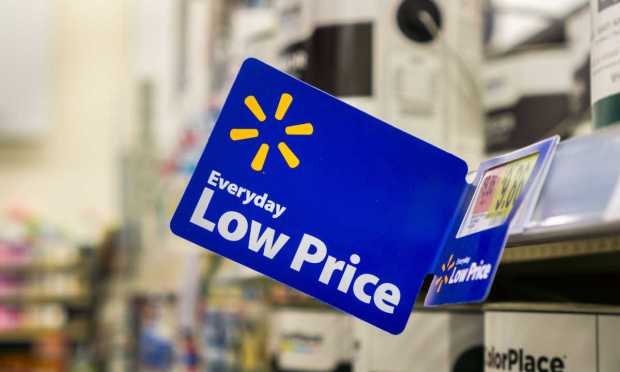Walmart Is Cutting Prices as Amazon Is Cutting Jobs

In a week that began with Walmart being cheered for delivering strong results and ended with Amazon embarking on its sharpest round of job cuts ever, the performance gap between the two retail giants has not only reversed from its long-term trend but by some measures has never been more pronounced.
Said another way, while the past 12 years have been dominated by shares of Amazon (+1100% vs + 150% for WMT), the past 12 months have been all about Walmart (+5% vs -45% AMZN).
While investors have inflicted a painful $1 trillion punishment on the eCommerce giant’s stock from its recent peak in 2021, what matters now for industry watchers is where things go from here and how they will look a year from now and beyond.
Although Walmart told analysts and investors Tuesday (Nov. 15) that it is gaining share in groceries and other consumable items, and its “Everyday Low Price” anthem is increasingly drawing in more affluent households that earn above $100,000 per year, those shifts are in large part due to the prevailing economic winds rather than from a major strategic shift.
In fact, quite the opposite, as Walmart CEO Doug McMillion said the retailer’s current hard-line stance on pricing is the same today as it’s ever been.
“We’re going to try to do the best job we can, category by category, item by item, of getting prices down as we head through next year,” McMillion said in response to questions surrounding recent reports that Walmart is blocking suppliers from passing along their own inflationary cost increases. “That’s been consistent. That’s the way we always behave.”
The flip side to that, however, is customer behavior, which has changed this year due to record high inflation and widely held fears about recession. It’s a cocktail of economic unease that plays right into Walmart’s wheelhouse.
“Our purpose of saving people money has never been more important as inflation remains consistently high,” CFO John Rainey said on the call, noting the impact that high gasoline and food prices have had on household budgets and buying habits. “Walmart is well positioned to serve customers and gain greater trip frequency during tougher economic periods, and we have even more tools to do so in the cycle.”
That present reality begs the question, What will happen to Walmart and its newfound customers when a better economic period eventually arrives?
Only time will tell.
When the Going Gets Tough …
In a twist on the old saying about tough times, the second half of that quip increasingly seems to include some sort of pivot to non-retail related defensive lines of business, or to finish the quote … the tough turn to healthcare.
That’s exactly what Amazon did this week in announcing the launch of its self-branded chain of low-cost clinics in 32 states in the wake of its $3.9 billion acquisition of One Medical last summer which is expected to be finalized soon, and also include its existing pharmacy unit.
“Amazon Clinic will operate in 32 states and provide virtual care for more than 20 common health conditions, such as allergies, acne, and hair loss,” the company’s press release said. “We want to make it dramatically easier for people to get and stay healthy.”
As much as the healthcare and pharmaceutical industries are more recession proof than the traditional sale of discretionary merchandise, the sector is not without its own set of risk and unique dangers, to wit Walmart’s $3 billion opioid settlement it agreed to this week for its pharmacy’s role in the prescription painkiller scandal.
For all PYMNTS retail coverage, subscribe to the daily Retail Newsletter.
